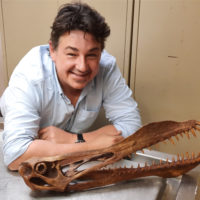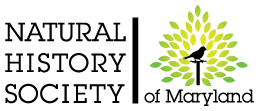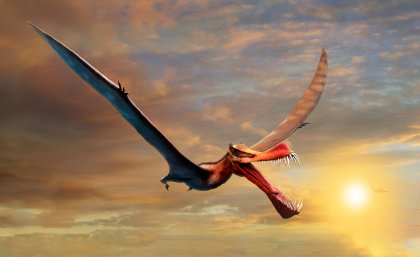The NHSM Fossil Club is honored to have University of Queensland PhD candidate Tim Richards, from the Dinosaur Lab in UQ’s School of Biological Sciences, who led a research team that analyzed a fossil of the creature’s jaw, join us via Zoom to discuss this amazing discovery.
Pterosaurs were a successful and diverse group of reptiles – the very first back-boned animals to take a stab at powered flight. In 2011 a fossil was found in an Australian quarry. It has recently been determined to be a new species that belonged to a group of pterosaurs known as anhanguerians, which inhabited every continent during the latter part of the Age of Dinosaurs. With a spear-like mouth and a wingspan around seven meters, it would have been the stuff of nightmares for unsuspecting dinosaurs below.
The name of the new species honors the First Nations peoples where incorporating words from the now-extinct language of the Wanamara Nation – thapun [ta-boon] and ngaka [nga-ga], the Wanamara words for ‘spear’ and ‘mouth’, respectively.
Natural History Society of Maryland’s Fossil Club is a group of novice and more experienced collectors will meet to exchange knowledge and help with fossil identification, discuss fossil locations, as well as other fossil related topics. Monthly meetings are held the first Wednesday of every month at the Natural History Society of Maryland. Due to COVID, NHSM is opening up this club meeting to all. Non-members are asked to donate $5. If you are a fossil enthusiast, please consider joining (https://www.marylandnature.org/club-membership/). The Natural History Society of Maryland is a volunteer-led non-profit organization, so the fee you pay will go directly to support the programs, the nature collections, and the building that make this kind of nature education possible


